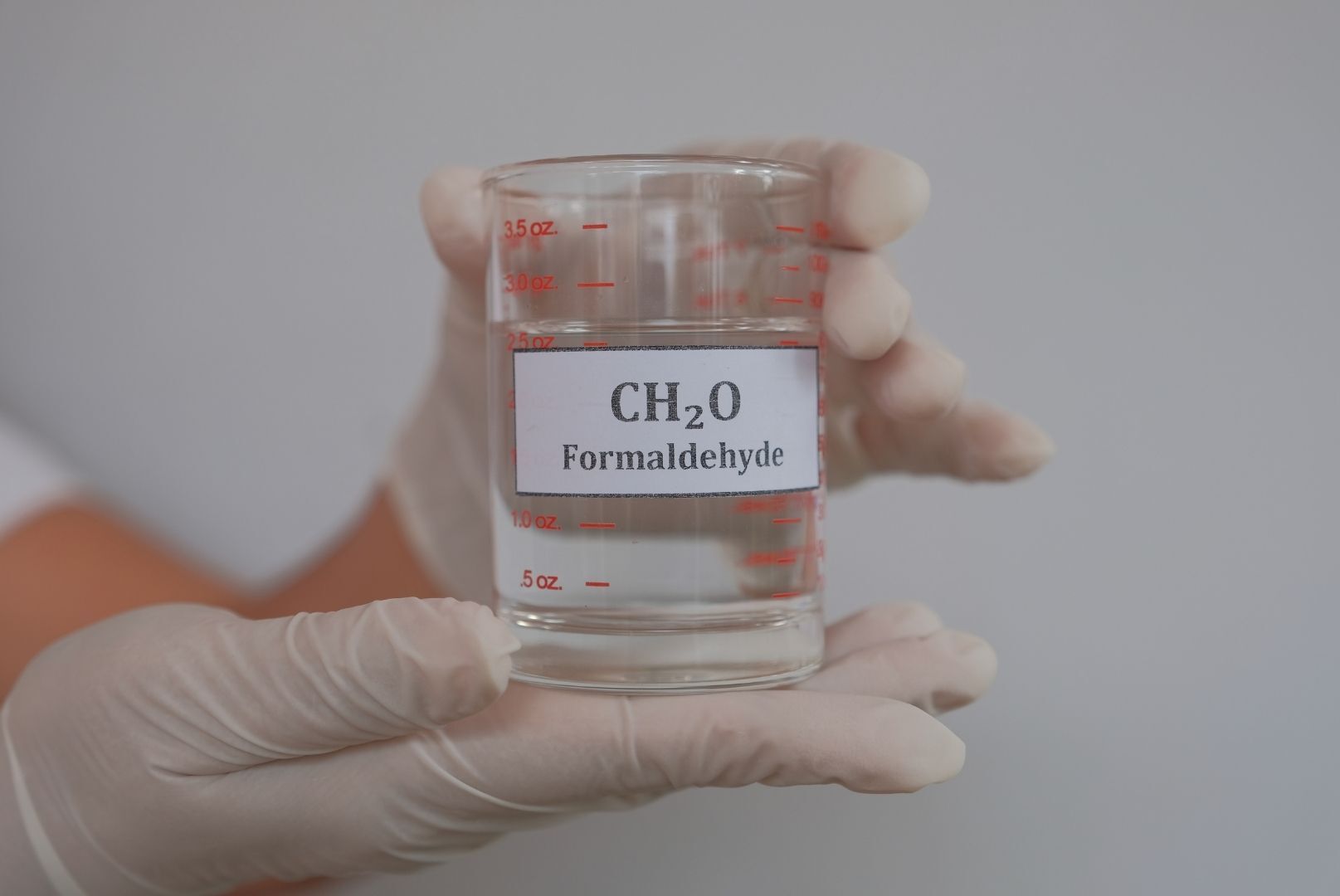

There's no denying that there's an ever-increasing awareness and discussion about the ingredients used in beauty products, more specifically potentially-questionable ingredients and chemicals. And among the sulfates and parabens and phthalates of the world, there's another, seemingly much scarier player, that has people talking: formaldehyde.
Unlike many of its counterparts, it's not an ingredient exclusive to the beauty industry; it's used during the embalming process, after all—and that's exactly what has people (understandably) concerned.
Ahead, we dive into the use of formaldehyde in beauty products... and whether or not the fear surrounding it is warranted or overblown.
What is Formaldehyde?
Fact: Formaldehyde isn't an artificial chemical. It's a naturally-occurring, organic compound that's produced in living organisms, including in the human body as part of the cell metabolism process. It's a gas and doesn't accumulate in the body, however, since the formaldehyde we naturally produce is ultimately converted to carbon dioxide and exhaled. It's also naturally found in fruits and veggies, such as apples, pears, peas, carrots, and bananas.
So, if it's already in our bodies (and the food we're eating), what's the problem?
For starters, The International Agency for Research on Cancer (IARC) and the National Toxicology Program classify formaldehyde as a human carcinogen; it's associated with an increased risk of nasopharyngeal and sinonasal cancers, as well as a type of leukemia. However, it's important to note that it's a known carcinogen when its fumes are inhaled, a key point when talking about formaldehyde in beauty products.
Which Products Contain Formaldehyde?
In beauty products, formaldehyde is used as a preservative to prolong shelf life and prevent bacterial contamination. But here's where it gets a little tricky and tough to simply read ingredient labels and avoid it: it's often disguised in formulations by other names. Remember, formaldehyde is a gas, so rather than using pure formaldehyde—and listing it as such—cosmetic companies often use formaldehyde releasers (one notable exception being hair straightening treatments… more on those in a minute).
These are ingredients that decompose slowly over time to form molecules of formaldehyde. This slow release process limits the amount of formaldehyde in the product at any one time and maintains a fairly constant level of preservative prolonging the shelf life. Common formaldehyde releasers that you are likely to see in a product include: DMDM hydantoin, methylene glycol, quaternium 15, and 3 dioxane, just to name a few. These can be found in all types of skin care products.
Some nail products, such as polish and remover, can have high concentrations of formaldehyde in their formulations and release vapors that we can potentially inhale. (Nail hardeners may also contain the liquid version of formaldehyde, known as formalin.)
What Are the Risks of Formaldehyde Exposure?
As mentioned, the biggest concern is inhaling formaldehyde fumes. The good news is that, because of the way it's formulated in beauty products, that risk is fairly low, with one notable exception. The highest risk of exposure cosmetically is in formaldehyde-containing hair straightening formulations used in some Brazilian blowouts or keratin treatments. When the solution is heated, the formaldehyde in the products is released into the air as a gas. If the salon isn't properly ventilated, both the salon professionals and their clients are at risk of inhaling the released formaldehyde.
Again, inhalation can also be an issue from nail products, but that scenario poses less of a cancer risk. The issue is the most common side effect of formaldehyde: irritant contact dermatitis (a fancy term for skin irritation). Even though levels are low in most cosmetic products, many people are highly sensitive to formaldehyde, and it can cause redness, itching, and scaling of the skin, as well as irritation of the eyes, nose, and throat. You can also be allergic to formaldehyde, which manifests in similar ways, including redness, itching, swelling, inflammation, and blisters.
You might even be using a product with formaldehyde releasers for a long time and then suddenly develop an allergy. The only way to tell whether formaldehyde is irritating your skin or if you're actually allergic to it is via a patch test; though, it's estimated that less than 3% of the US population has some type of sensitivity to formaldehyde.
Conclusion
There are some very real health concerns associated with formaldehyde. It gets dicey because the FDA doesn't regulate the use of formaldehyde in skin care. It recommends that it not be included at all in aerosols, and that other products contain no more than .2 percent. But those are merely recommendations and companies aren't obligated to comply. In short, it falls on you to be an educated consumer and do your due diligence if you're concerned about formaldehyde and/or if it's causing skin allergies or irritation. In that case, go ahead and simply avoid even those aforementioned formaldehyde releasers; shopping from brands and/or retailers that have clear lists of banned ingredients is a good start, as those will definitely be on their "no" lists.
The good news is that with most products, the levels of formaldehyde released into the air—because, again, it's most dangerous when inhaled—are very low. A 2012 study found that the amount of formaldehyde inhaled from the use of face moisturizer, foundation, shower gel, shampoo, deodorant, conditioner, gel, and body lotion (all of which contained formaldehyde-releasing agents) was too minimal to pose a risk to human health.
Hair straightening treatments undoubtedly pose the biggest potential risk, so make sure to do your homework. There are formaldehyde-free formulations available, and it's also a good idea to ask your stylist to see the ingredient list. It's important to check the ingredient list of in-salon straightening treatments too.
At the end of the day, there's good reason why formaldehyde has a certain stigma around it. For most of us, it's nothing to worry over, particularly if you take the time to educate yourself and shop smart. And by shopping smart, we mean shop natural and never have to worry about this chemical or others. For natural skin care that works, check out Wild Naturals today and take care of your skin worry free!


